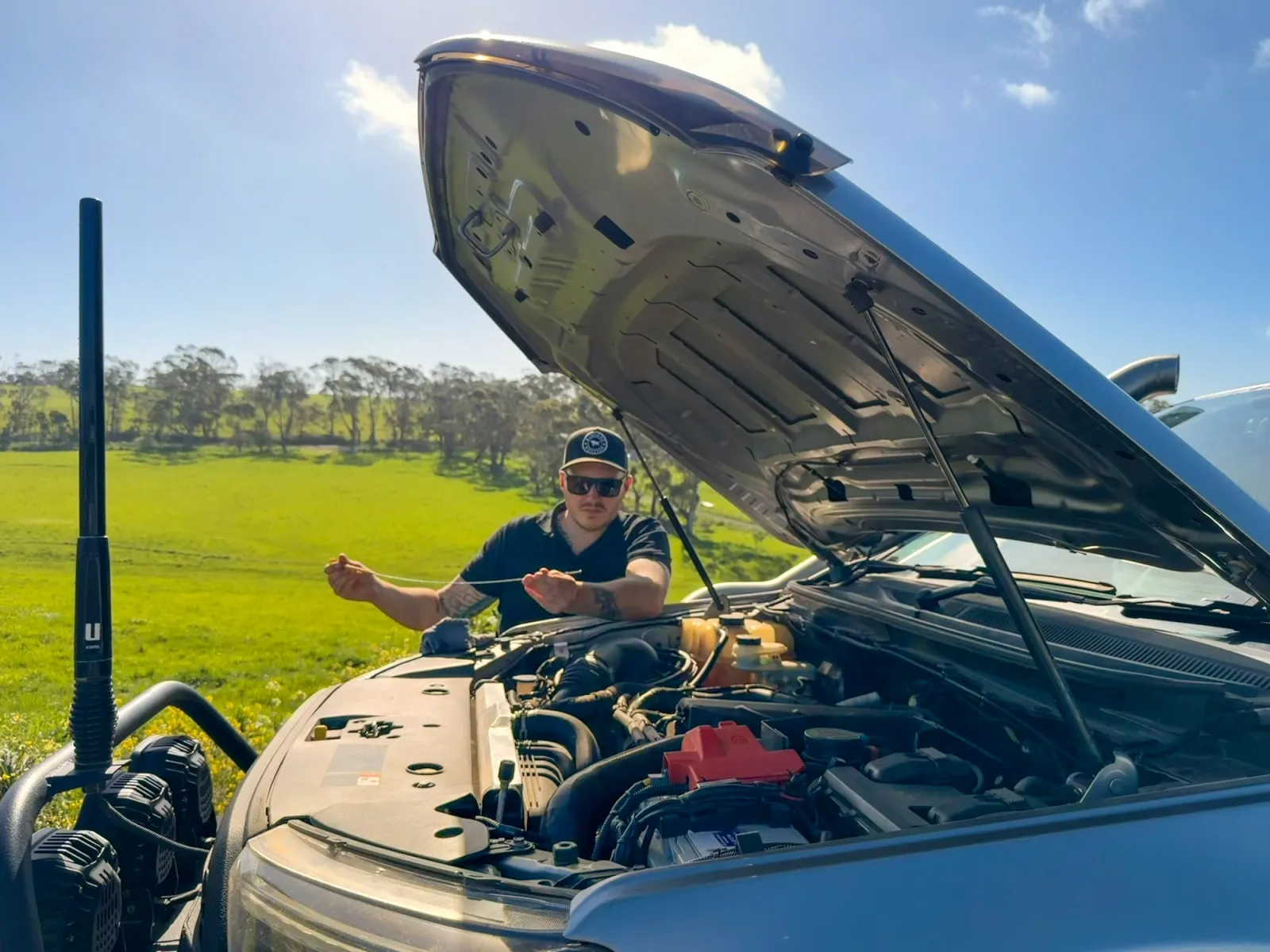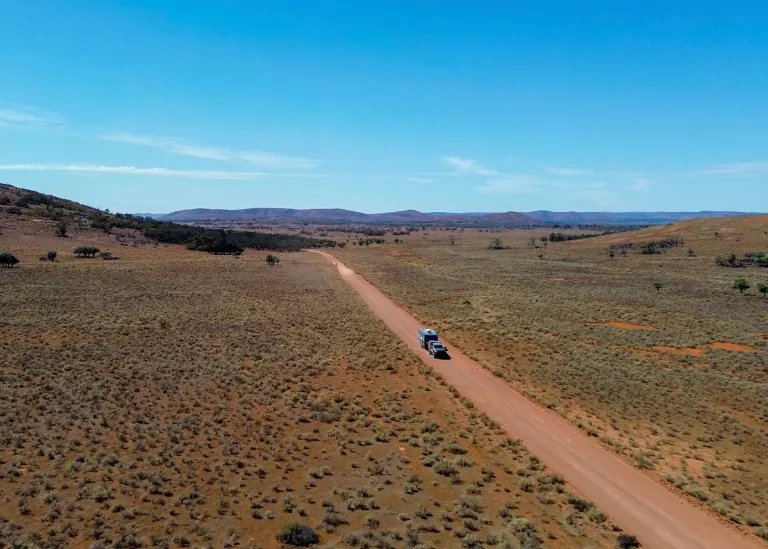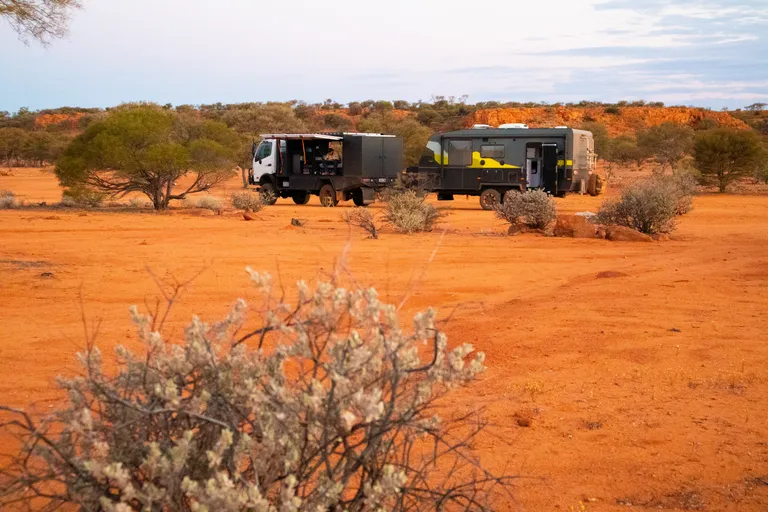Diesel engines used to have a reputation for being unkillable. Sure, they’re tough, but they’re not bulletproof— at least not anymore. I’ve seen more than a few crook motors on the side of the track, usually cooked by heat or neglected maintenance. The truth is, a lot of engine failures are avoidable, and not all of them are faults of the engine itself.
Your diesel is doing a lot more than the logbook gives it credit for. Hauling a three-tonne van through the desert isn’t the same as the worksite commute that the service intervals were based on. If you want your engine to last, especially in Aussie conditions, you’ve got to take matters into your own hands. That means watching temps, doing the checks, and staying on top of maintenance.
Heat is the Killer
If there’s one thing that kills more touring diesels than anything else, it’s heat. It builds up quietly under load, during slow climbs, deep sand, and tight technical tracks. If you’re not monitoring it properly, you won’t know it’s there until the damage is already done.
The factory temp gauge is about as useful as a kettle made of chocolate. It stays dead-centre until your head gasket is ready to throw in the towel. Exhaust Gas Temperatures, or EGTs, give you real information. If they stay too high for too long, you’re cooking pistons, glazing oil, and putting your turbo on death row. I’ve seen it firsthand too many times. I remember one old turbo-diesel Ford Courier that got so hot it melted its own rocker cover and internals.
If you want your engine to last, keep it cool. Use your gears properly, lift off occasionally to manage temps, and if you don’t already have an EGT gauge, put it on the list—it’s not optional.
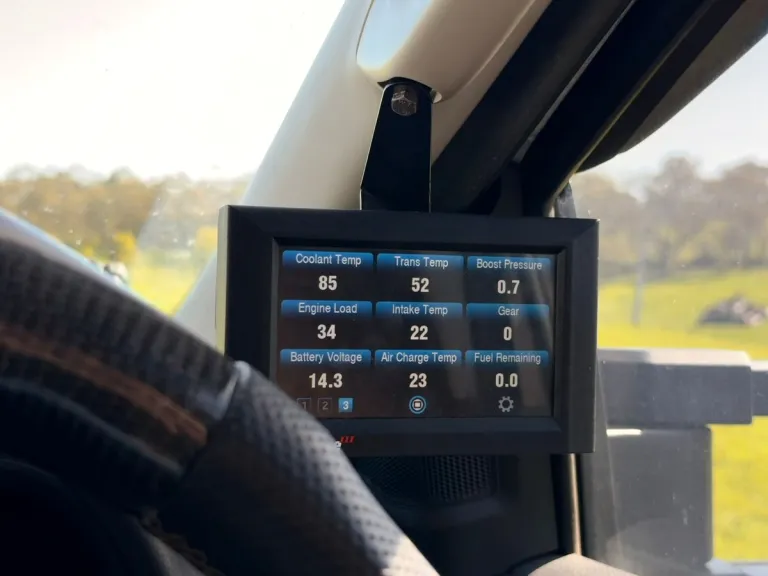
gauge inside of a vehicle displaying various readings and temperatures
Routine Maintenance
Engine oil has an important job. It lubricates, cools, and carries away crap. The moment it breaks down or gets overloaded with soot and fuel contamination, wear starts stacking up fast.
Folks tend to stick to logbook intervals like gospel, even when they’re towing through the Pilbara in 45-degree heat. Logbooks weren’t written for that. Change your oil and filter more often if you’re working the engine hard. Good oil isn’t cheap, but new engines aren’t either.
Whatever you do, don’t skimp on filters. Cheap ones are prone to collapse and let debris through. This is one of the times where using a genuine product is a good idea.
Daily Checks
Daily checks sound boring, right up until the moment they save your bacon. I’ve caught cracked hoses, low coolant, and a radiator cap that wasn’t holding pressure just by doing a 90-second walkaround.
Make it a habit:
- Check coolant and oil levels
- Look and feel belts and hoses (if they’re crispy or cracked, replace them)
- Look under for drips or leaks
- While you’re there, check the tyres and give the rig a walk-around
Modern diesels won’t always warn you until it’s too late and you shouldn’t rely on a warning light. By the time it comes on, the damage is usually already done. Your eyes, ears, and nose are still the best engine sensors you’ve got.
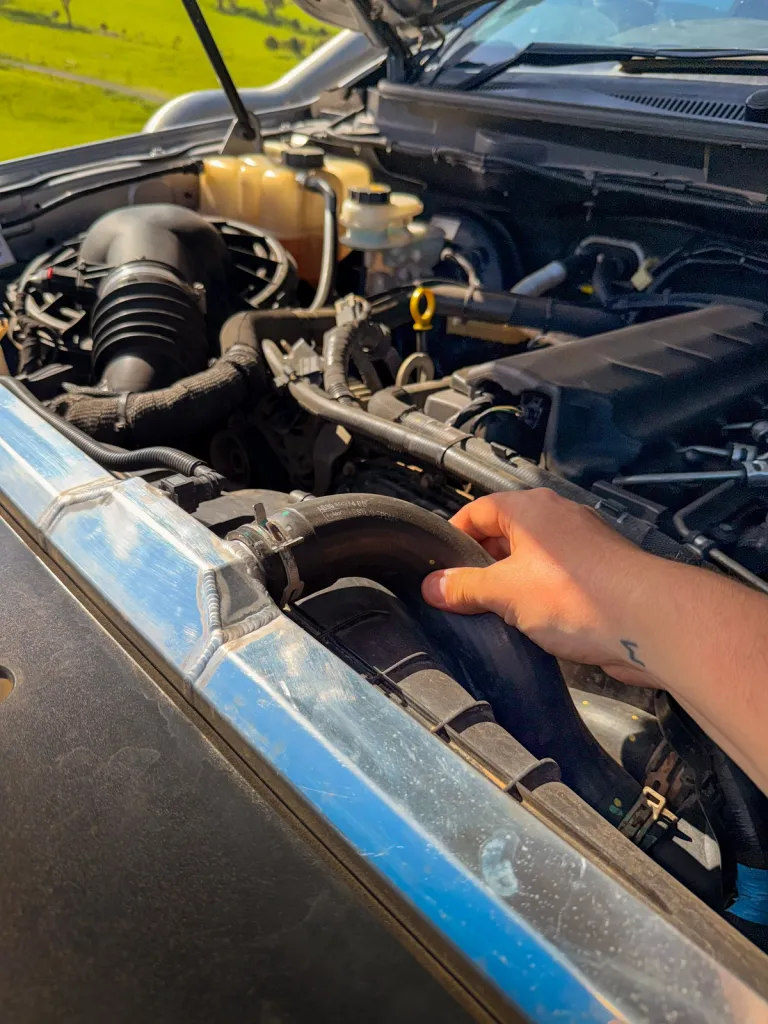
hand inside of a vehicle's engine bay
Gauges: Know What Normal Looks Like
Factory gauges are designed not to scare people, which is great if the biggest hill you go up is in the Westfield carpark. Out bush however, you need real-time data. If you’re serious about keeping your engine alive, fit proper gauges and actually learn what they’re trying to tell you.
Must-have gauges for touring:
- EGT (Exhaust Gas Temp)
- Boost
- Coolant temp
- Oil pressure or oil temp
- Auto trans temp
The key here is knowing your “normal.” That way, when something starts creeping up, you’ll spot it before the bang. Every engine has its quirks—find yours, learn the numbers, and don’t rely on warning lights to do your job. For more on this check out my yarn “The Gauges You Should Be Monitoring” here.
Air and Fuel
In case you haven’t been outside today, Australia is dusty and remote fuel quality is questionable at times. Combine the two and you’ve got the perfect storm for diesel engine destruction.
Dust bypassing a clogged air filter chews out turbos and cylinder bores faster than you can say “top end rebuild.” Dirty or water-contaminated diesel does the rest. Every touring setup should be running:
- A high-quality air filter (check it regularly)
- A pre-filter for fuel, ideally with a water trap
- A habit of filling up at high-turnover servos when possible
Trust me, I’ve seen perfectly good engines turned into scrap by one splash of crook fuel, 300KMs from civilisation. Here’s a few hard-learned tips:
- Never fill up while the tanker’s topping up the servo, that’s when all the sludge gets stirred up.
- And for the love of all things mechanical, stop smacking your air filter on the bullbar like it owes you money. You’re not cleaning it, you’re just punching the dirt deeper into the element.
- Carry a quality diesel fuel stabiliser and use it regularly. It’s cheap insurance, especially when you’re fuelling up in remote places where turnover is low and tank quality is anyone’s guess.
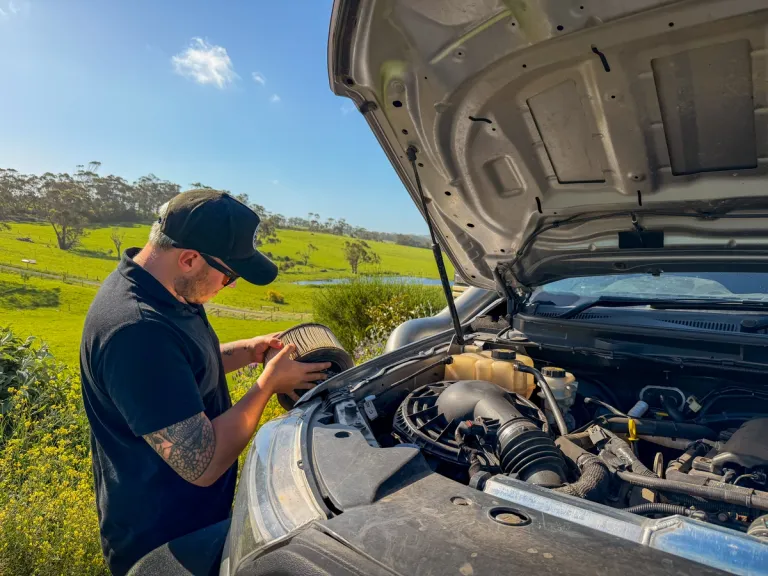
man checking the engine bay of a 4wd and inspecting the air filter
Driving Style
If you’re flogging it like you’re late for grid position at Bathurst, don’t expect your engine to love you for it. Constant high revs, full-throttle hill climbs, and holding gears just to hear the turbo whistle is a fast track to worn internals and early retirement.
What your diesel wants is controlled throttle, sensible shifting, and load management. Let the torque do the work, stay in the sweet spot, and stop driving like every traffic light is a drag strip. Touring is about momentum and mechanical sympathy. When you get that balance right, your engine stays happier, cooler, and lasts a hell of a lot longer.
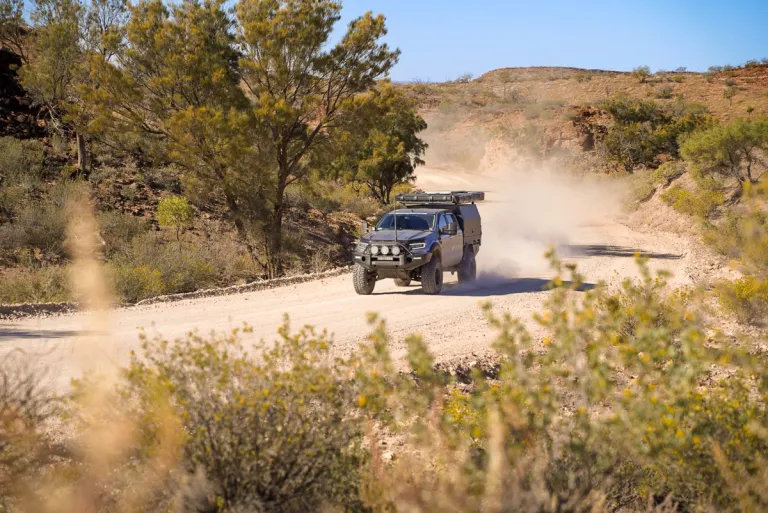
4wd driving through an outback track kicking up red dust
The Cooling System
Your engine's cooling system really is the unsung hero and I’m constantly amazed by what they’re actually capable of. In saying that, the radiator, water pump, hoses and thermostat all need to be up to the job.
Some things to check or upgrade:
- Make sure your radiator isn’t half-blocked with bugs or mud
- Use the correct spec coolant and monitor it’s level and condition
- Consider a fan upgrade or auxiliary trans cooler if you’re towing heavy loads
- Check your overflow bottle and radiator cap two of the most common failure points, and cheapest to fix
- Consider an aftermarket intercooler. The cooler your intake temps, the cooler your engine
Habits That’ll Help
- Warm it up smart, not long. Start your engine and let it settle for 45 seconds to a minute, then get moving gently. Sitting there idling for 10 minutes just invites fuel dilution and soot build-up. Get things circulating with an easy drive, that’s how you actually warm up a modern diesel.
- Ease into camp. Don’t charge up the final hill then shut the engine down while it’s still panting. That’s how you glaze turbos. A gentle run into camp, low revs and light throttle, is a better cooldown than any turbo timer or idle session. Mechanical sympathy goes a long way.
- Catch cans? This could be a bit of a controversial one. Personally, I don’t run one. In my opinion; If you’re sticking to regular oil and filter changes, you’re already preventing most of the issues catch cans are meant to fix. In many cases, they’re solving a problem that wouldn’t exist with proper maintenance in the first place. But, if you do choose to fit one, make sure you check and clean it regularly. They’re not a “set and forget” mod, and letting one fill up can cause more problems than it solves.
Listen to your engine. You know what “normal” sounds like. So when it starts cranking slower, rattling weirdly, or just feels off, don’t ignore it. That’s your early warning system talking. Pay attention.
Final Thoughts
In my view, most diesel engines don’t just die, they’re killed. Not with malice, but through neglect, heat, and a tonne of little oversights that slowly add up. Most of the motors I’ve seen let go didn’t wear out, they were pushed too hard, ignored for too long, or quietly cooked to death over time.
You don’t need to be a mechanic, but you do need to give a damn. Pay attention to the vitals, catch the small stuff before it snowballs, and drive like your engine has to get you home, because it does.
Tank full and road trip ready?
Make sure your insurance is too


